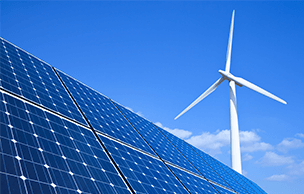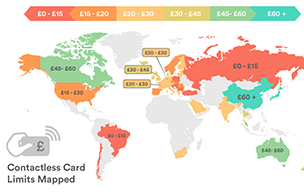
You can’t deny that businesses around the world have taken a greater focus on sustainability — and although this has been damaging for some companies, it has been a great shift for others. One prime example of this is the renewable energy sector; while traditional energy markets are faltering and facing a challenging road ahead, the renewables sector is breaking records.
Although a lot of markets rely on natural resources to operate, the renewables industry use resources that naturally replenish. Collected under the umbrella term of renewables is solar, wind and wave power, alongside biomass and biofuels.
As the market continues to grow, HTL Group, specialists in controlled bolting for the wind energy sector, analyses where the renewables sector is at now:
The market’s performance
The recent years have been successful
Occupying 55% market share and using 138 GW of power, the renewable energy sector is in the lead. Following in second place, coal created 54 GW of power-generating capacity, while gas created 37 GW and nuclear created 10 GW.
Renewables’ huge contribution to the global power-generating capacity accounted for 55% of 2016’s electricity generation capacity and 17% of the total global power capacity, increasing from 15% in 2015.
Research released by the UNEP highlighted that the renewable sector prevented 1.7 billion tonnes of CO2 in 2016 alone. Based on the 39.9 billion tonnes of CO2 that was released in 2016, the figure would have been 4% higher without the availability of renewable energy sources.
Renewable market investment
Regardless of the continued growth of the sector, investments actually decreased in 2016. In 2016, $242 billion was invested in the sector, showing a 23% decrease
However, this could be down to the alterations made to markets on a country-specific basis. In 2016, Europe was the only region to see an increase in investment in the renewables sector, rising 3% on 2015’s figures to reach $60 billion. This performance is largely driven by the region’s offshore wind projects, which accounted for $26 billion of the total, increasing by over 50% on 2015’s figures.
Across Norway, Sweden, Denmark
Believe it or not, investments made from China decreased from 2015’s $78 billion to $37 billion. Investment from developing nations also dropped in 2016 to a total of $117 billion, down from $167 billion in 2015. In 2016, investment had almost
What does the future look like?
With greater developments, the future looks bright for the renewable sector. From the falling cost of technology to societal shifts like the 2040 ban to prevent the sale of new petrol- and diesel-fuelled cars, the future certainly looks positive for the sector — even if
In the future, it is inevitable that the sector will overtake more traditional markets on a global scale,


























